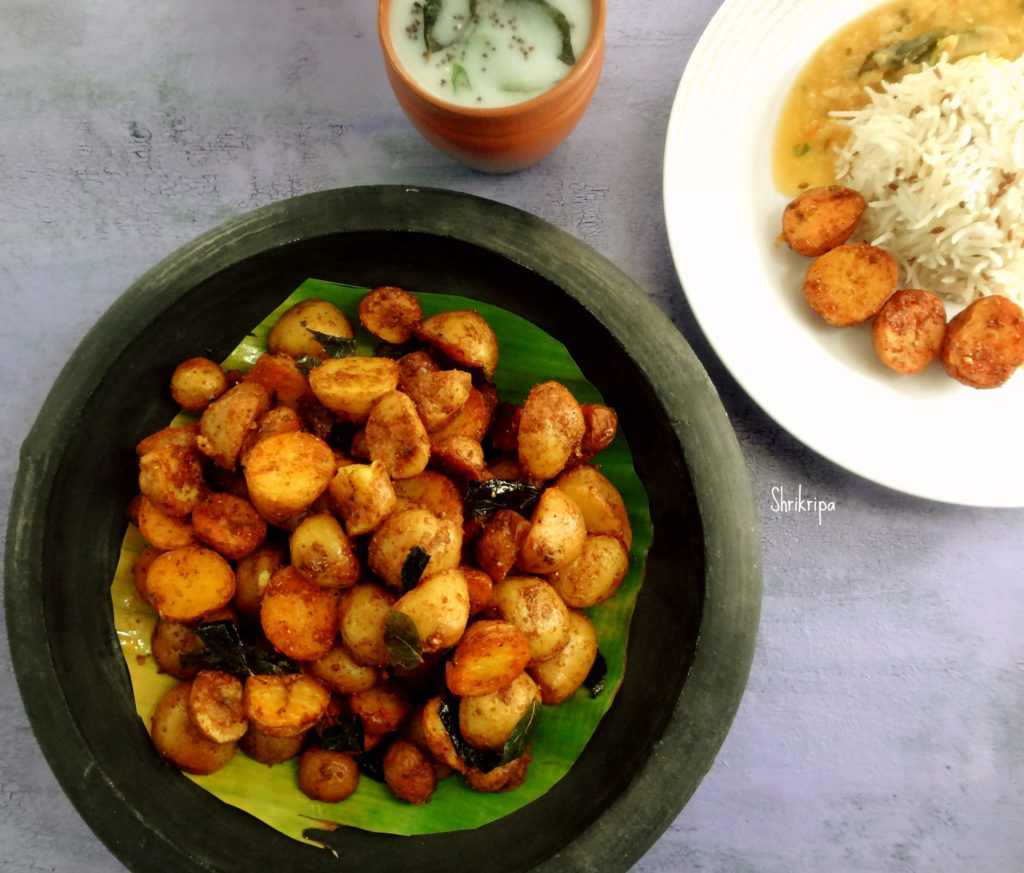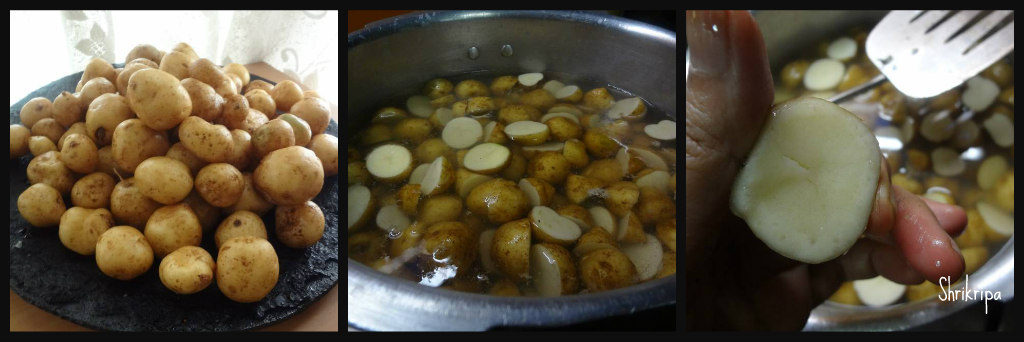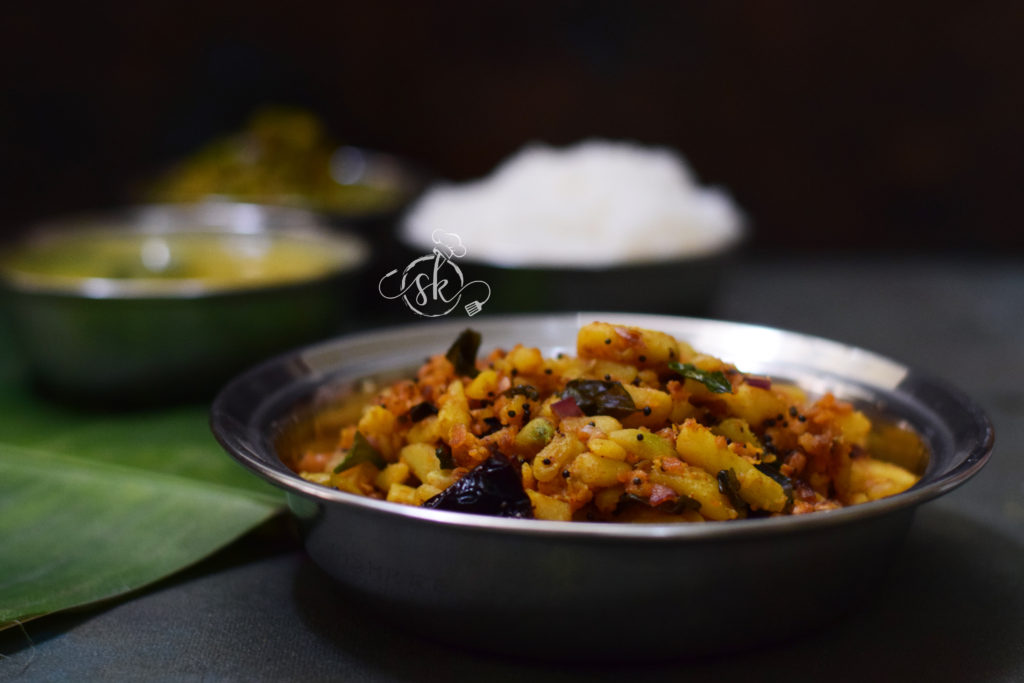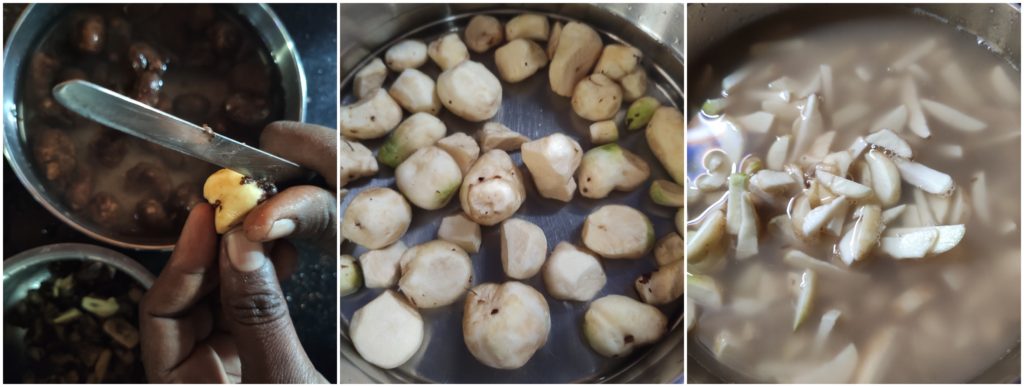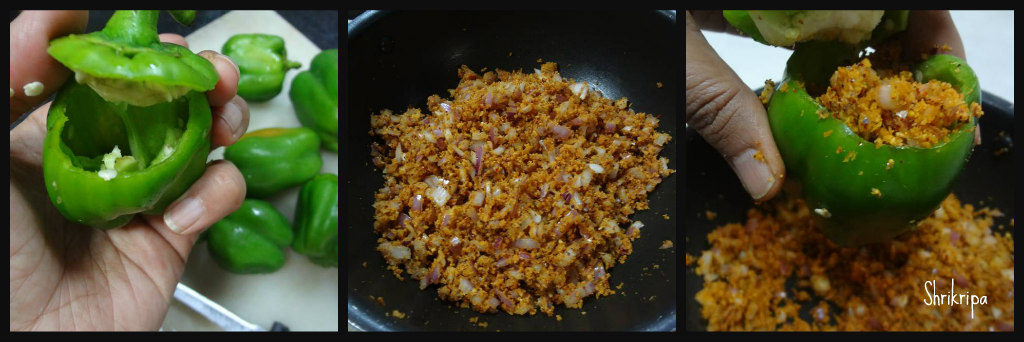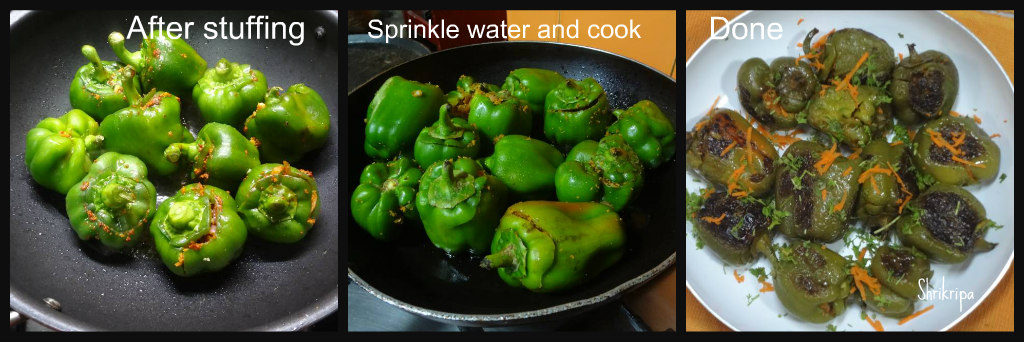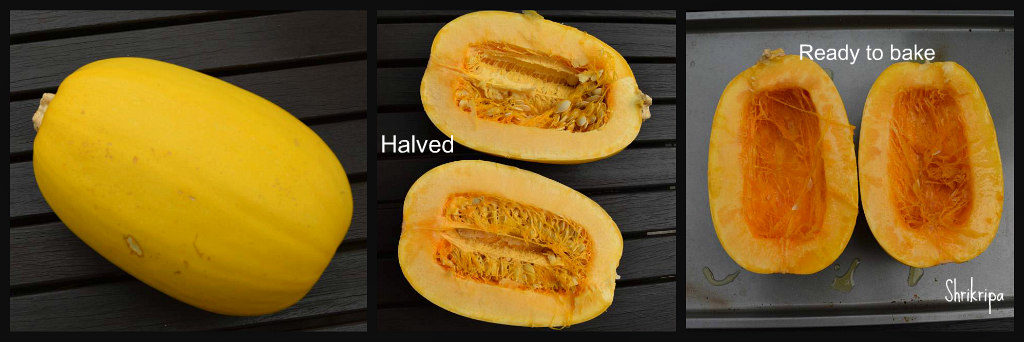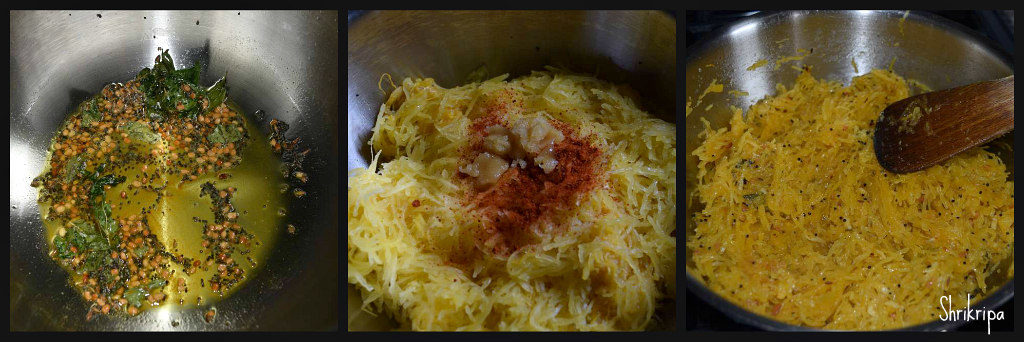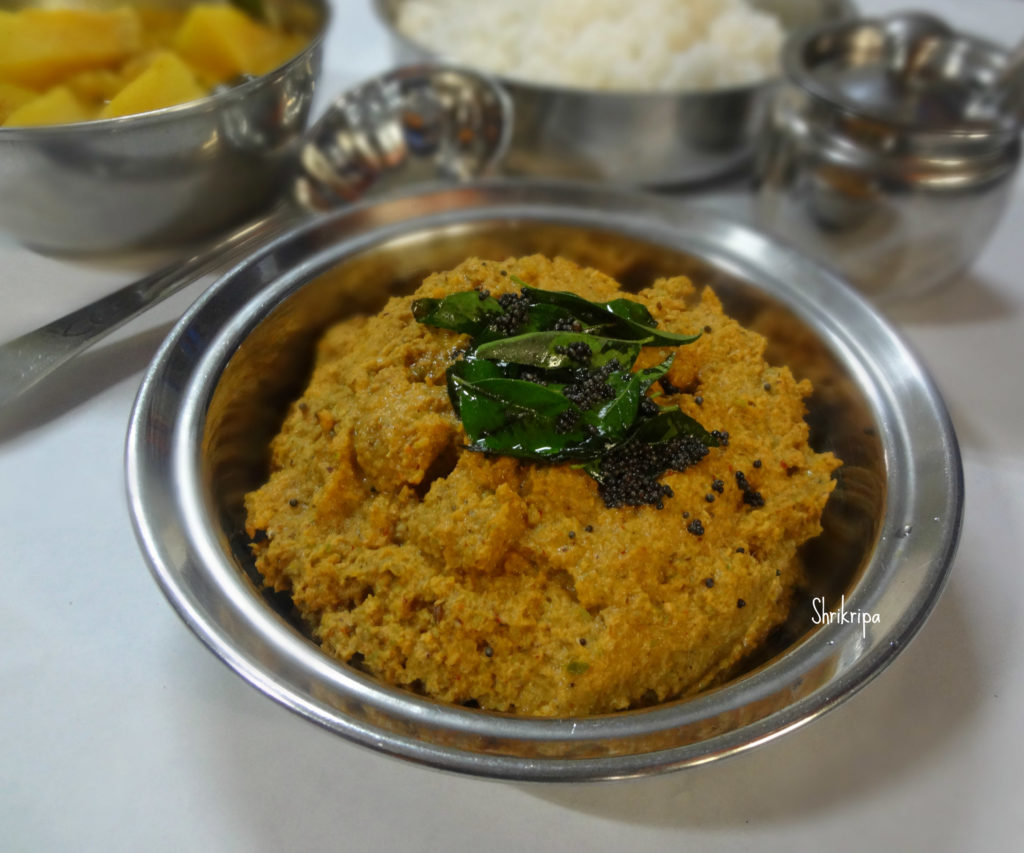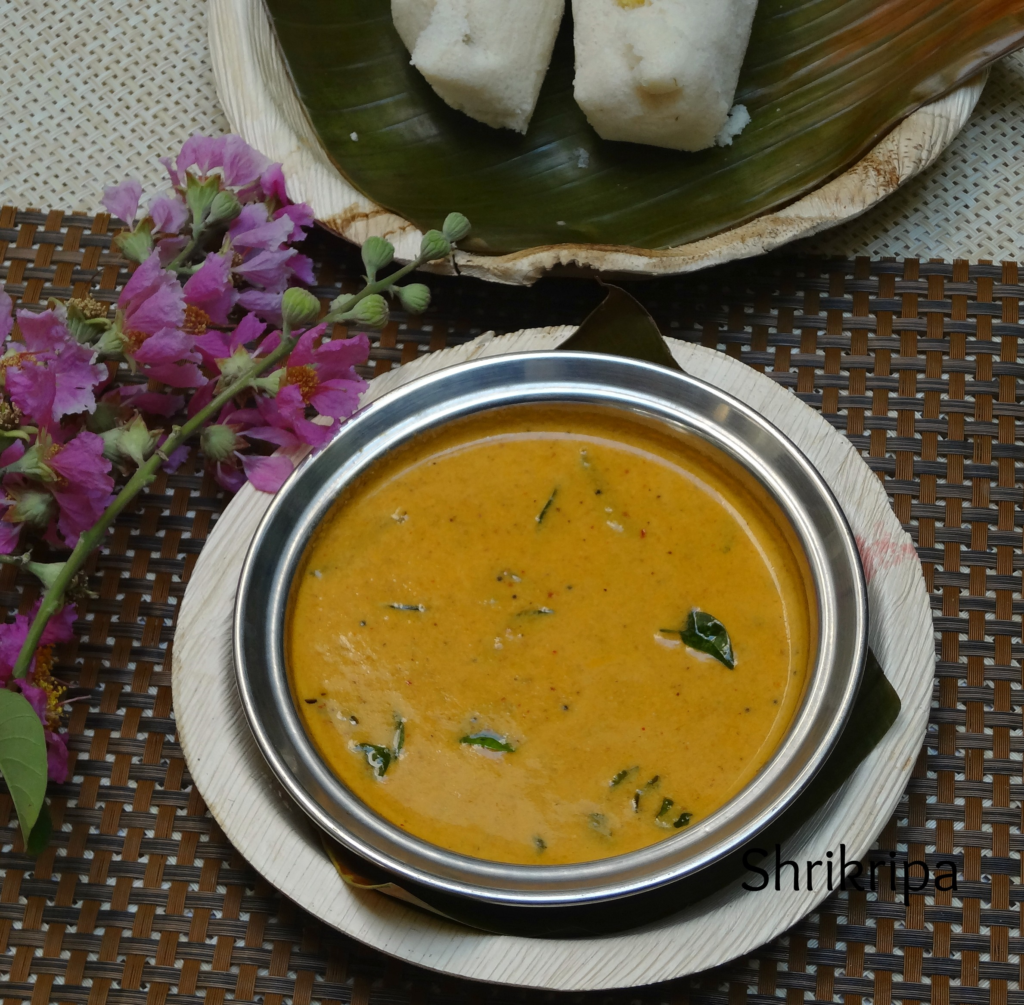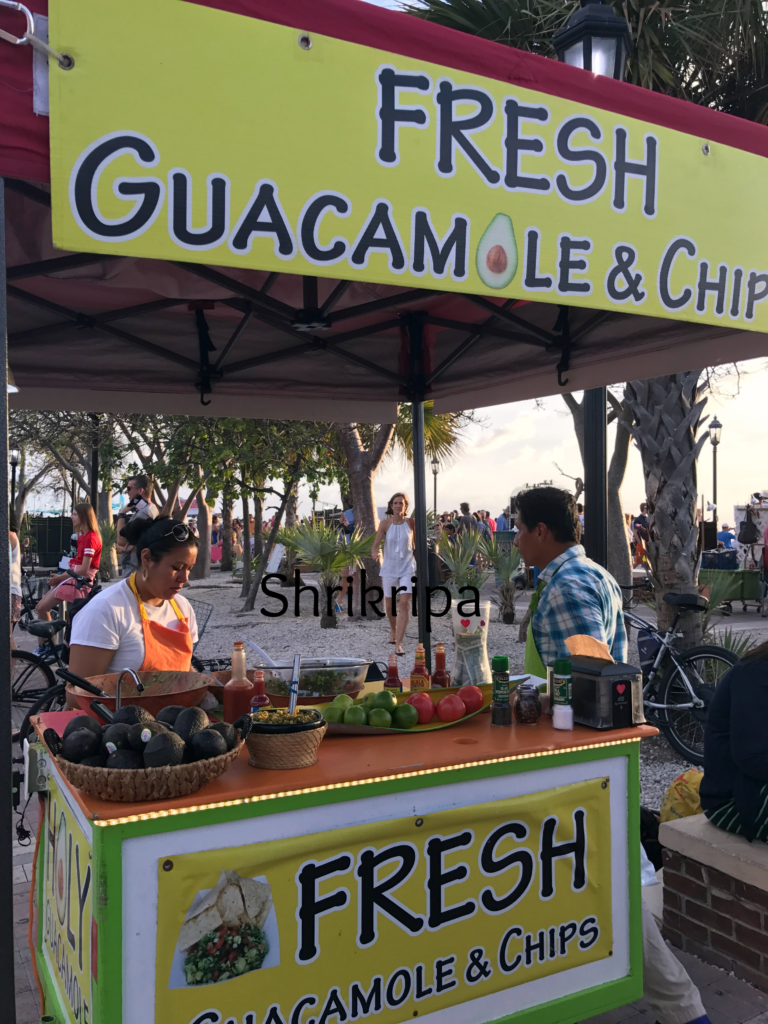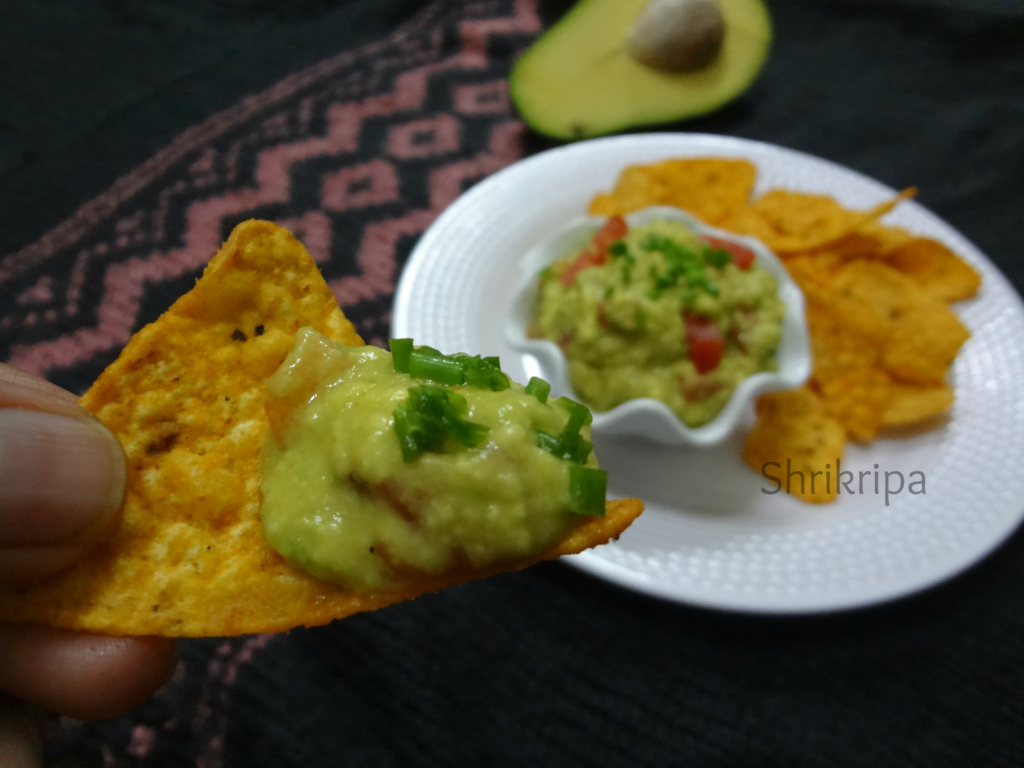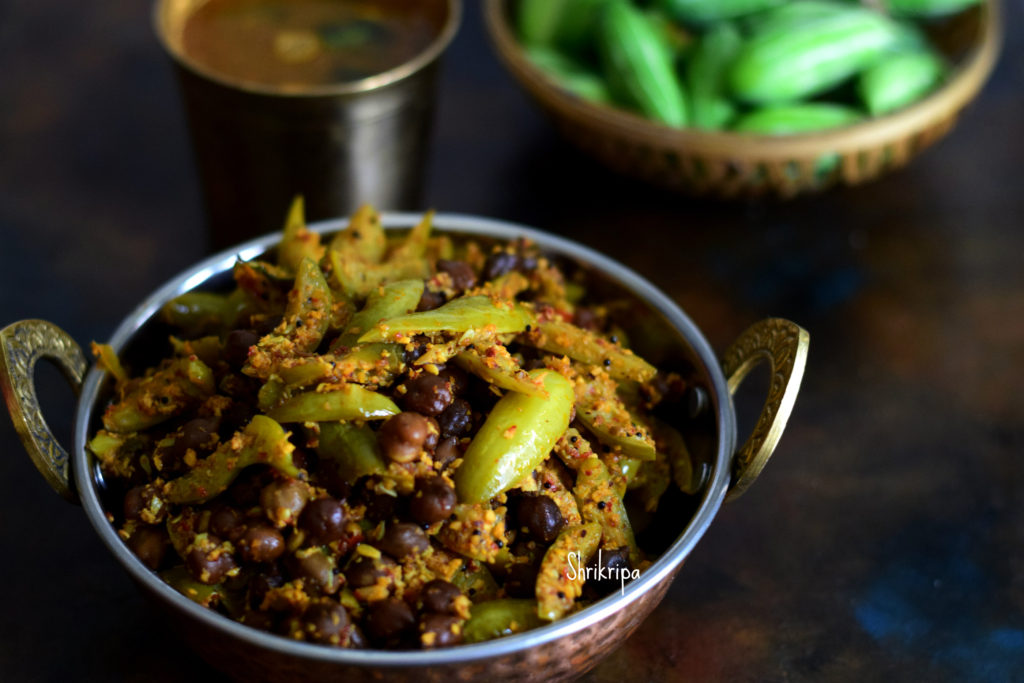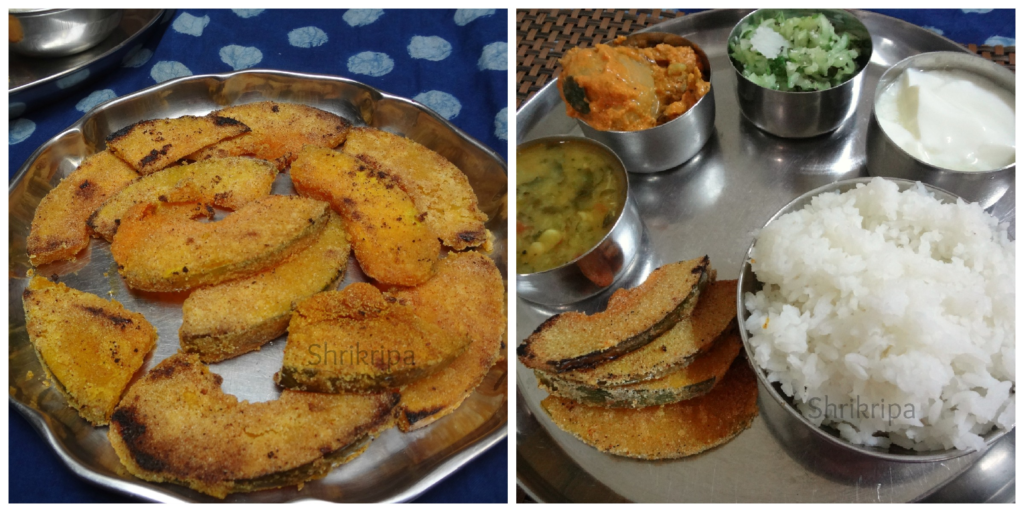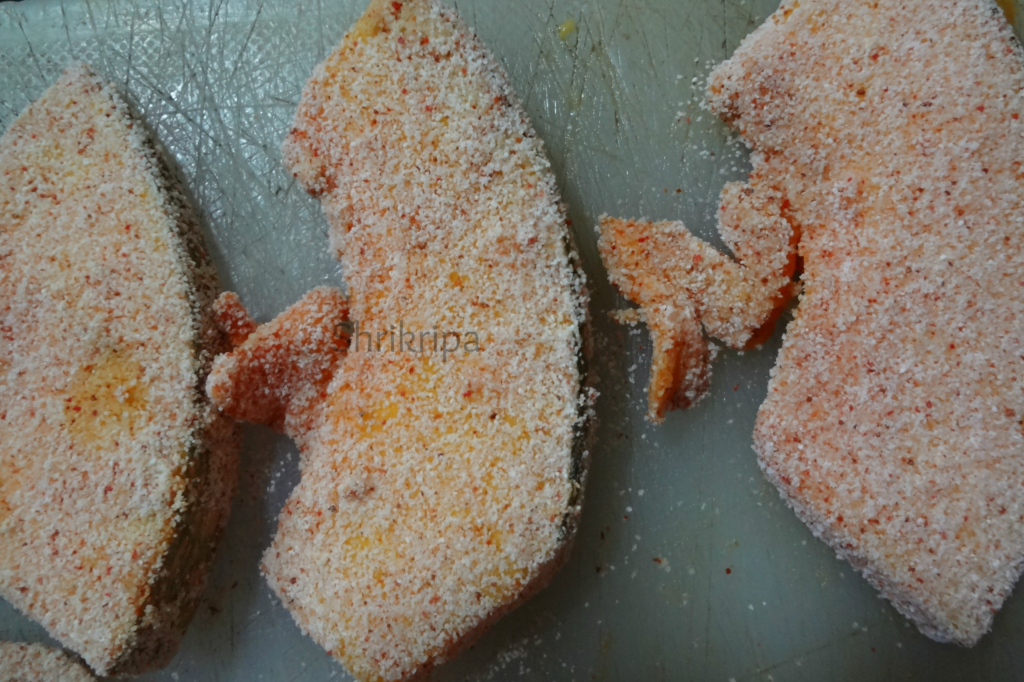Pumpkin flower is bright yellow coloured, which is loaded with essential nutrients, minerals and used in a different cuisine around the world and considered as a rare delicacy in a gourmet cuisine as well.
Pumpkin plant bears male as well as female flowers separately. Usually Male flowers appears initially, and female flower is a rarity. These flowers last only for a day and wither by the evening. That is the reason why we see only Male flower in cooking. It has a main role in pollination and after that it will wither, and female flower will grow as a Pumpkin. If you have a doubt in distinguishing between male and female flowers, male has only a long stalk and the female has a round green, big swollen structure(ovary) at the base of the petals.
Pumpkin flowers are used either in a raw, tossed, pan fried, cooked forms in various recipes and it is found occasionally in salads, soups or batter fried. Here I am showing Mangalore style tawa fry in which pumpkin flower will be coated with seasoned fine semolina and tawa roasted by drizzling some coconut oil to give coastal touch.
If you have Pumpkin, squash or Zucchini plant in your garden, collect all the male flowers and make this and enjoy your meal. You can collect the fresh flowers every day and store it in an air tight box for 3 to 4 days and utilise in your cooking.
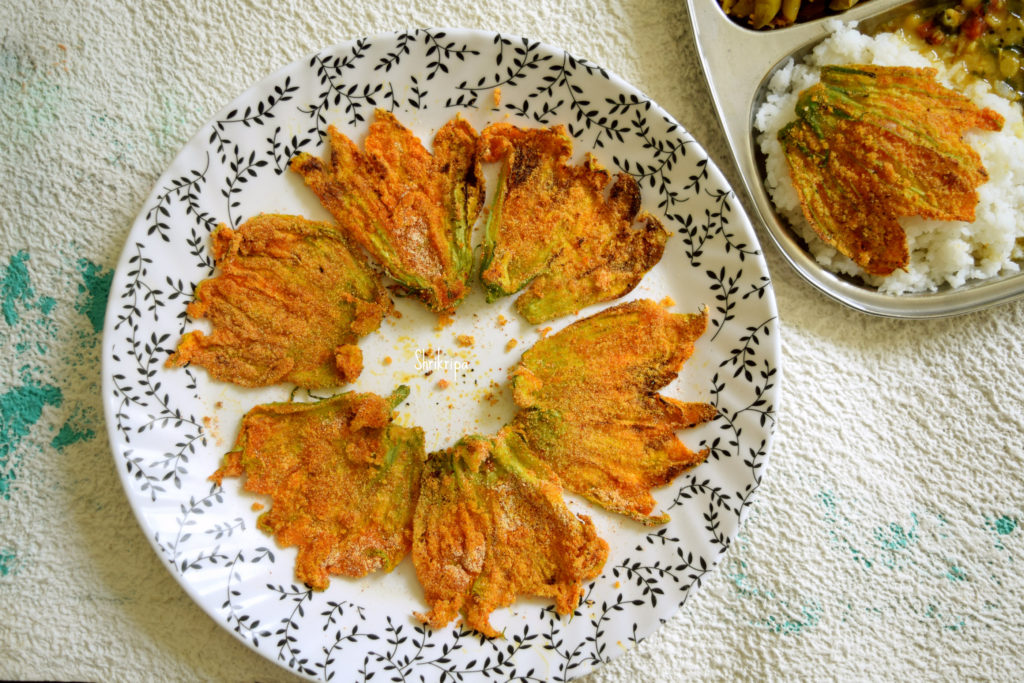
This is how I make-
Ingredients:
Pumpkin flowers – 5 to 6
Fine semolina – 1 small cup (chiroti rawa)
Salt
Hing – ¼ tea spoon
Turmeric powder – ½ tea spoon
Red chilli powder – 1 tea spoon
Coconut oil – as needed
Method:
-Wash flower, give one fine slit at the bottom of the flower and cut open.
-Remove stamen.

-Dry mix all seasoning items from rawa, salt, red chilli powder, turmeric powder and hing.
-Take each flower and coat with the seasoning, by rolling.
-Heat iron tawa/ griddle, place all these coated flowers.

-Roast these by using sufficient coconut oil on both the sides.
-Serve these with hot rice and Rasam or dhal.

